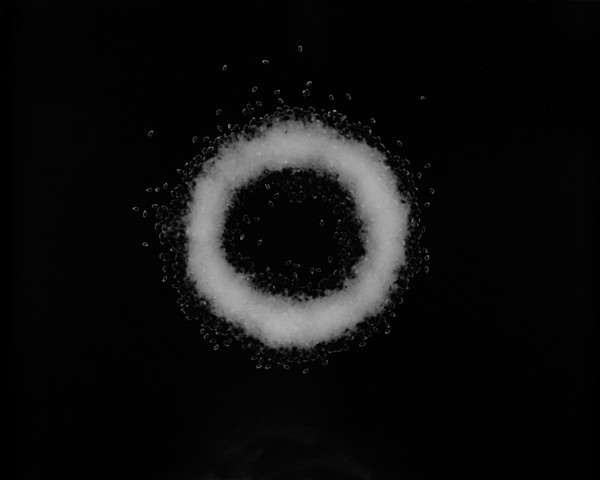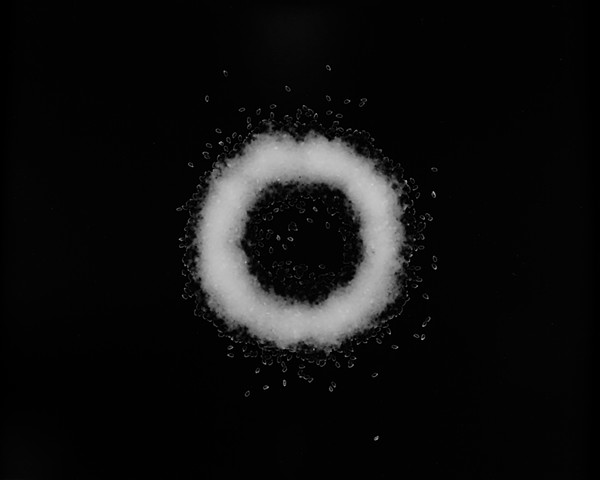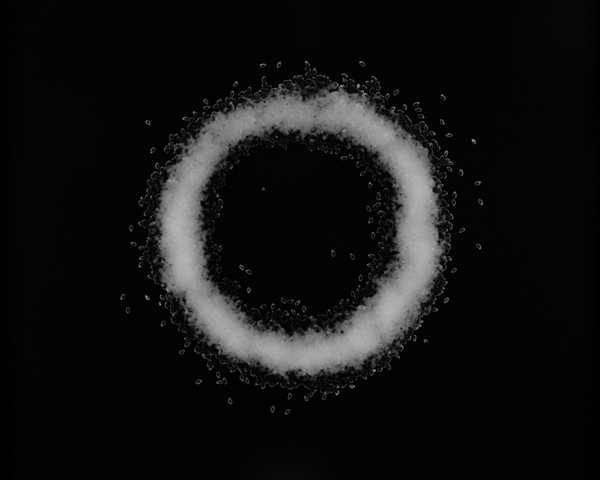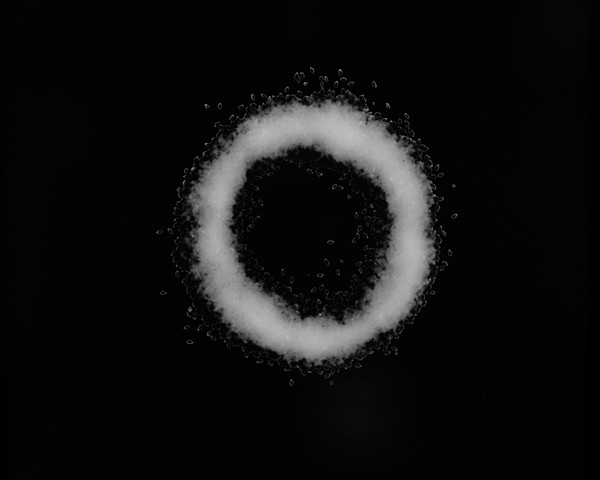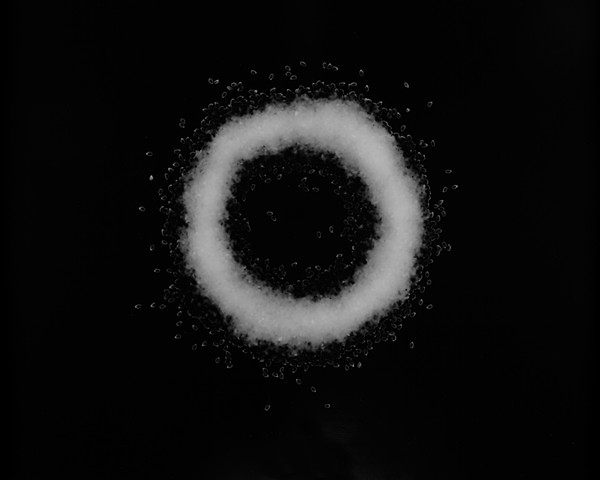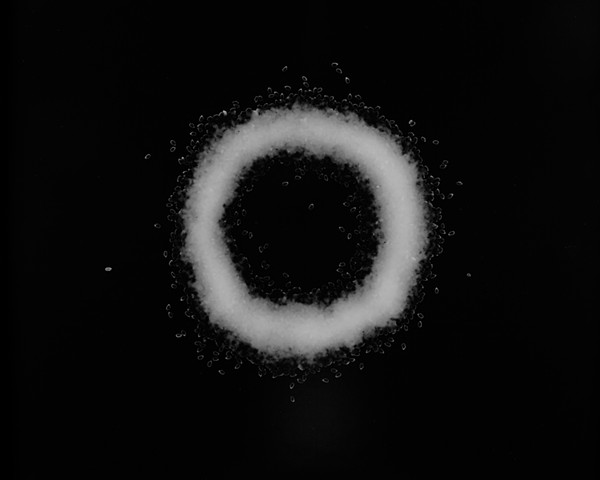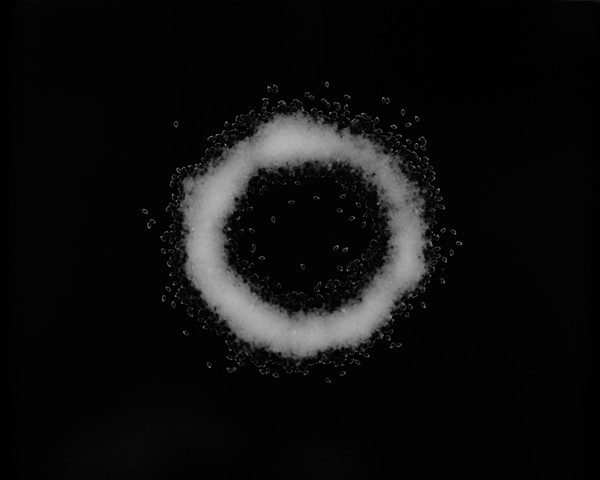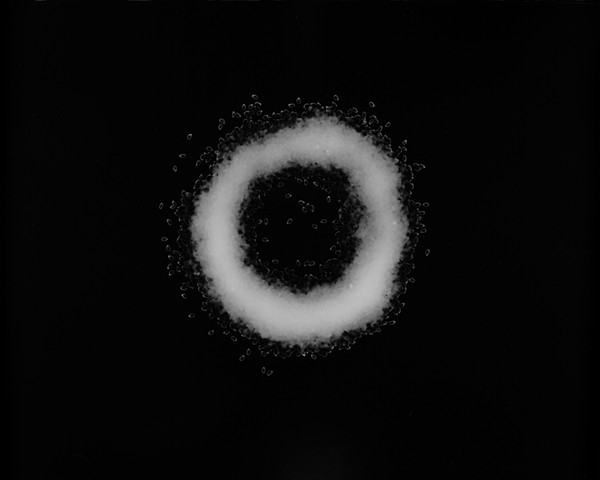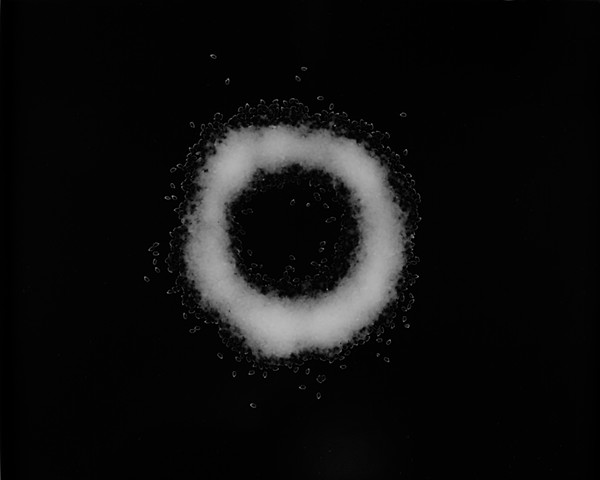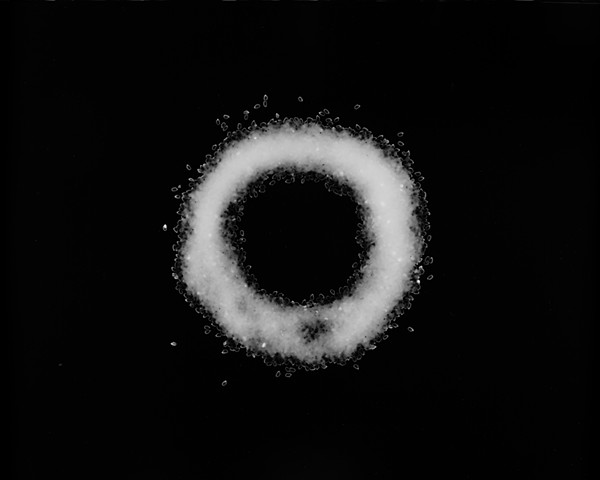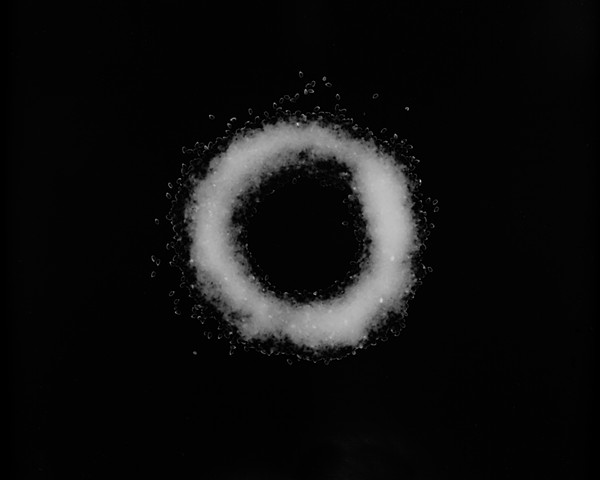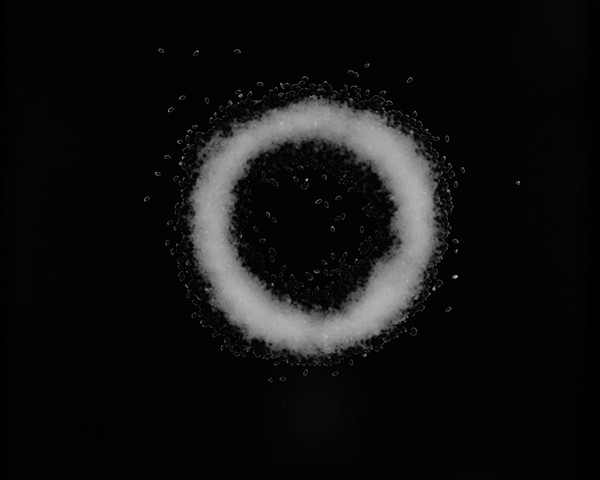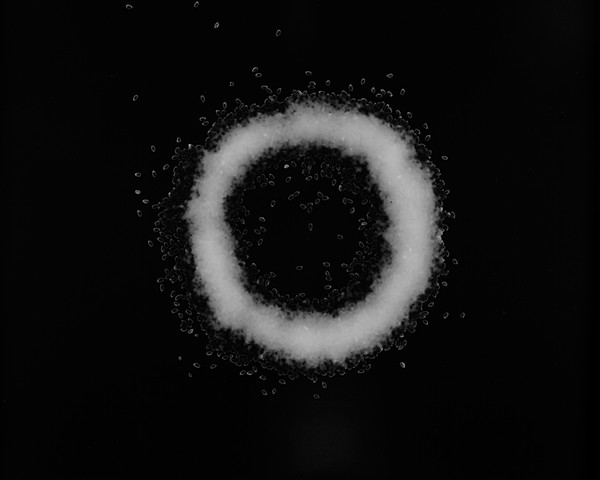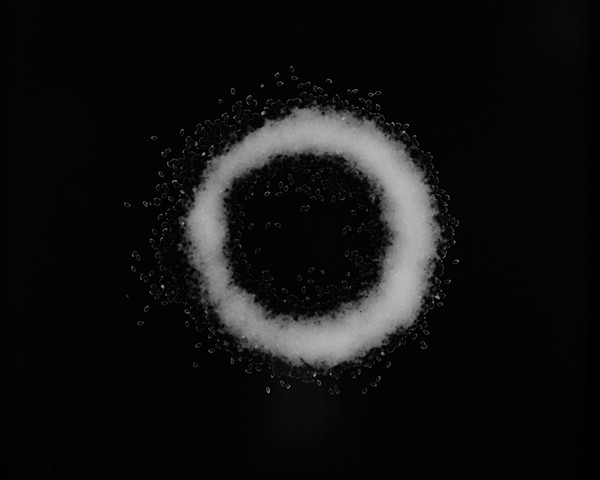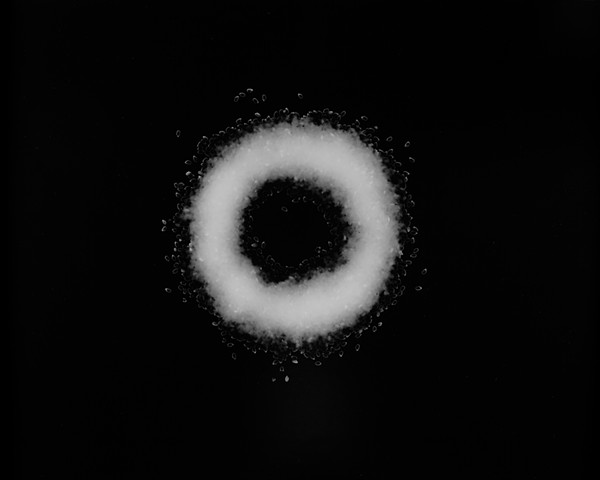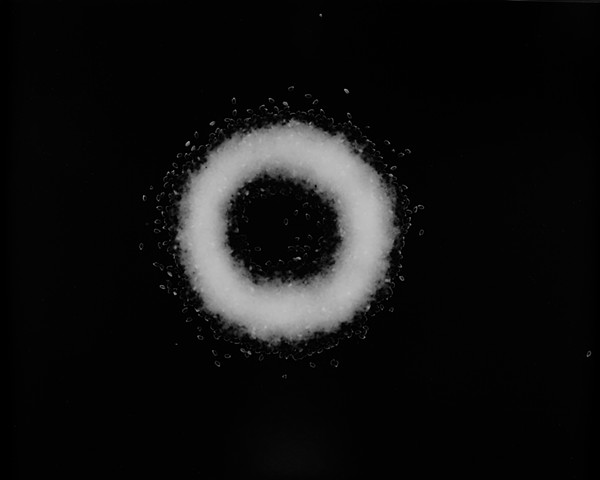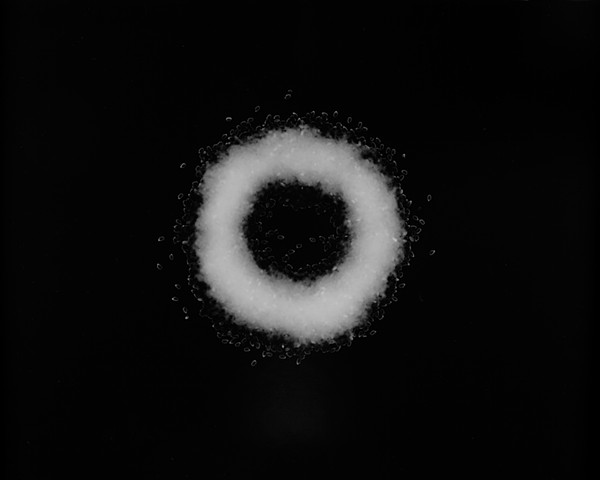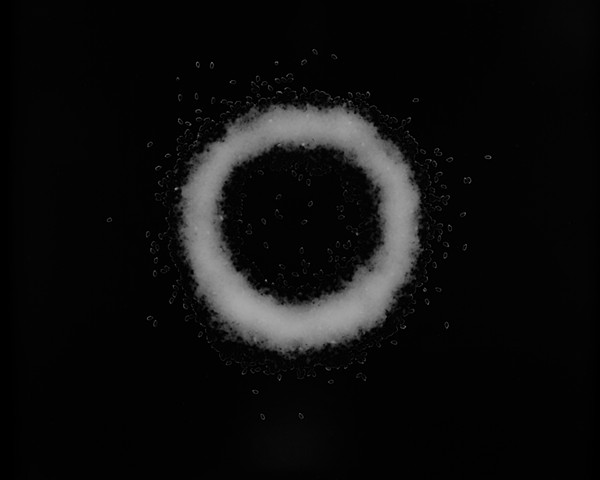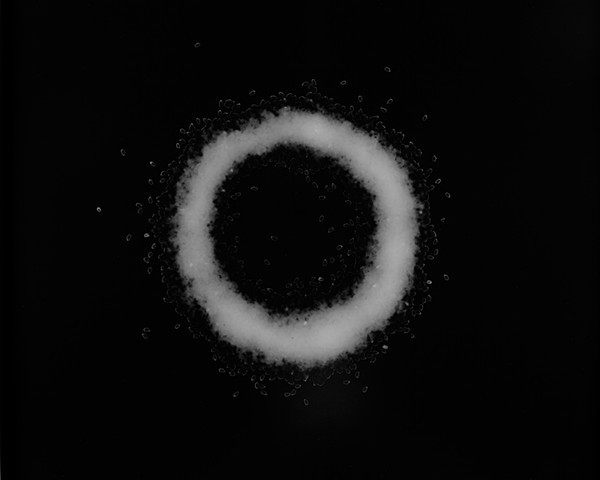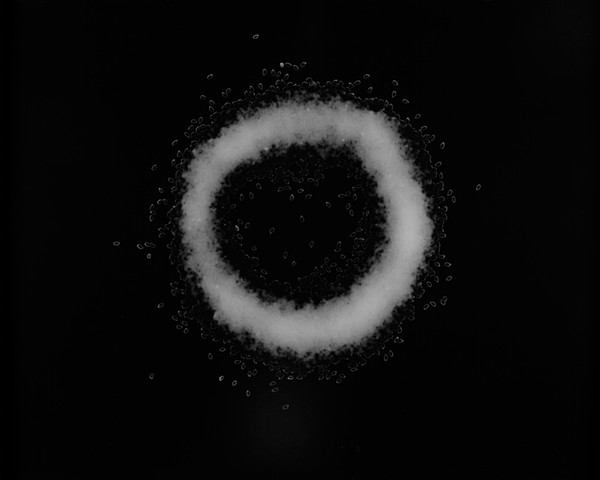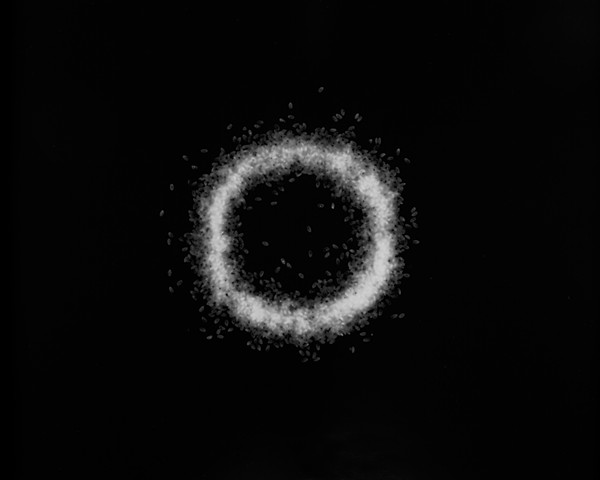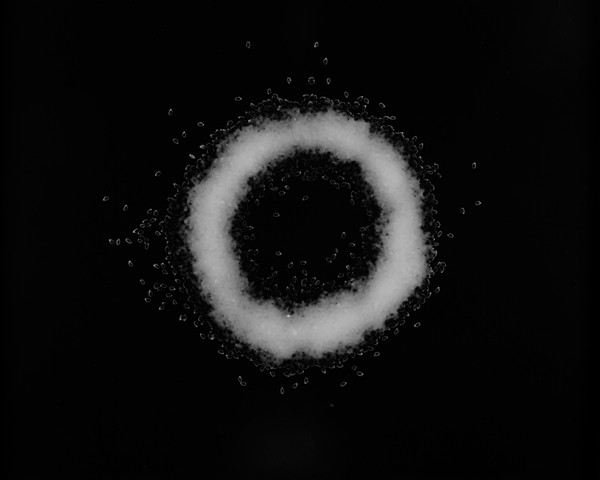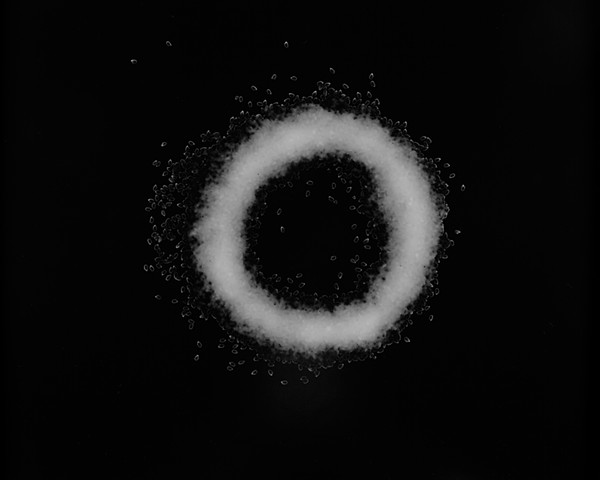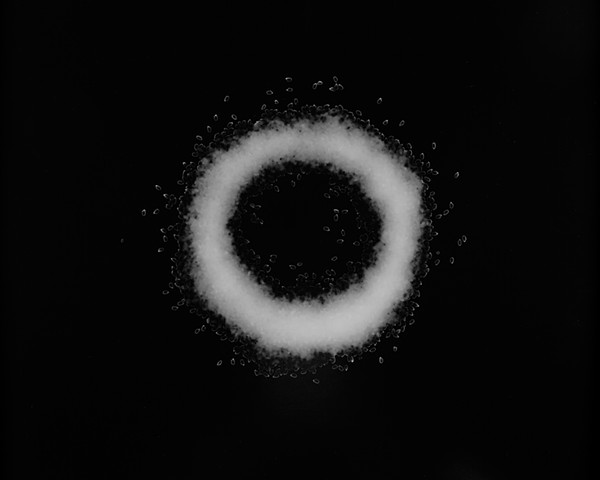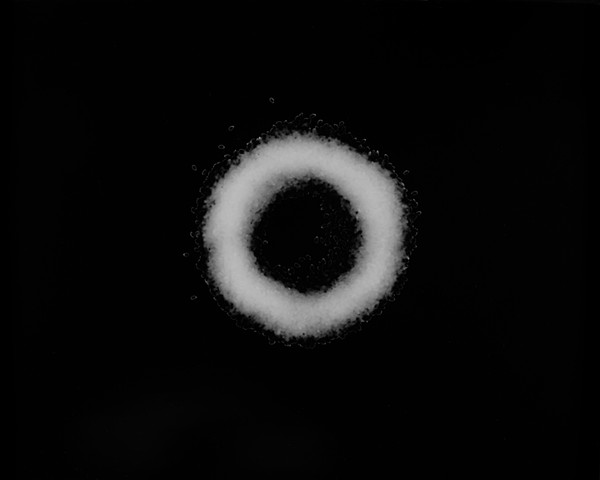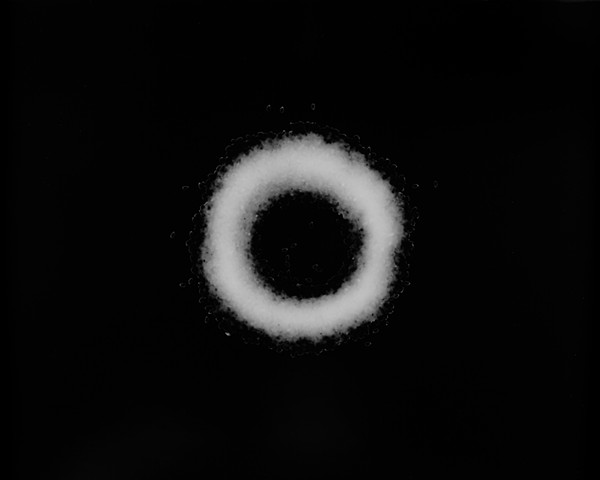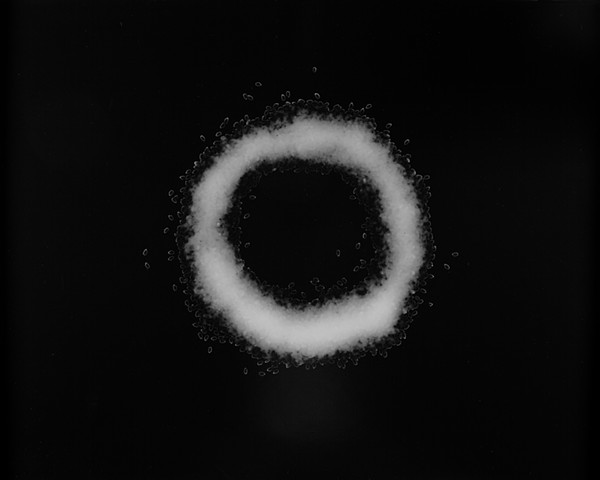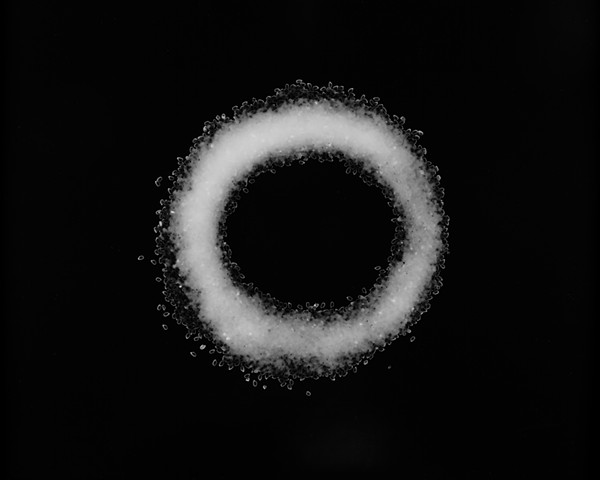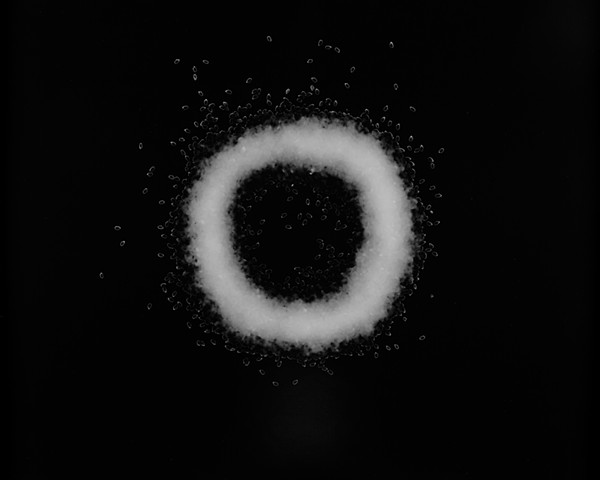Glocal
Enso Rice Photograms
2011 - 2012
This series was sparked by an e-mail from a young photographer friend in Japan named Iwauko Murakami. Following the earthquake and tsunami on March 11, 2011 I wrote her several times inquiring about her welfare and to see how I could be of help. She replied that she wanted to do something for her hometown in Japan, as one individual artist, but was at an impasse what to do. She was aware of my previous work with rice and photograms "Global," and asked if I could make more artwork with rice. The x-ray look of my photograms reminded her of the radiation, and since rice is so important culturally, and such an important staple for the Japanese she thought it would be important subject matter, emblematically speaking. She enlisted many of her friends to send her different kinds of rice from all over Japan, including Fukushima, and then she sent it to me, carefully labeled. Indeed, the titles of the individual prints reflect the location, kind of rice, and people who participated in this collaboration.
The new “offerings” are a prayer for Japan. This series is called "Glocal," a reference to “glocalization,” a relatively new word referring to individuals and communities that “think globally and act locally.” I credit the title of this work to James MacDevitt an art history associate professor at Cerritos College where I teach, who introduced me to the word. The amount of rice Iwauko could send was limited to a small quantity, so I needed to find a new form. After some rumination, the enso (Zen circle) presented itself. The enso is a circle, usually painted with brush and ink. It is a traditional symbol of pure potential. It signifies neither negation nor affirmation. From the basic space of awareness things emerge without ever parting from that basic space. Piles of rice accumulate into a circle of density that displays a form of lightness. Yet it is not that the light is good and the darkness is bad. The deep black of these selenium-toned silver gelatin prints is the “Ma” or emptiness out of which circles appears. The circle emerges from emptiness, yet it never leaves emptiness. Luminous clarity is the natural expression of openness. All things are composed of other things, which are in turn comprised of other things, right down to their spacious and open core. This is beyond expression or conceptual elaboration, yet these pictures nevertheless attempt an alternative to words.
I dedicated 50 sheets of 16 x 20 inch Oriental silver-gelatin paper to the project that were printed in four day-long sessions. Four attempts were made from each of the 13 bags of rice sent by Iwauko and her friends Eri, Kumabe, Emi, Yuko & Yuta, Shoko, and Rino & Aya. The rice came from various locations in Japan including Niigata, Ibaraki, Akita, Fukushima (the site of the nuclear disaster), Hokkaido, Aomori, Miyagi, and Chiba. In the first darkroom session I tried to manipulate the shape of the rice by using a large sumi brush. Thereafter I simply let the rice fall wherever it fell and tried to just concentrate on perfect density as I slowly spread the rice out of a bamboo incense container onto light sensitive photographic paper. Each circle was composed in a clockwise direction, in the manner in which one circumambulates a stupa. The process became a kind of ritual as I recited the 100 syllable mantra of Vajrasattva throughout the entirety of each session. Altogether there were 37 successful prints.
The photogram prints are intended to be beautiful and fascinating objects, symbols of enlightened awareness, and the result of a process whereby individuals collaborate on a global scale with the intention of generating relief for the Japan earthquake victims and their local communities. All profits for the series “Glocal” shall be donated to the relief effort. Perhaps more importantly, in the words of Iwauko “This project is aimed not only to earn profit for save victims but also the active art, which will remark to the society and make people think something depth in this our world.
